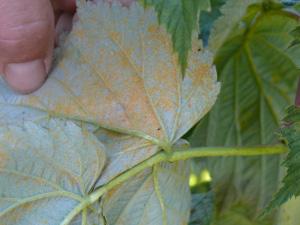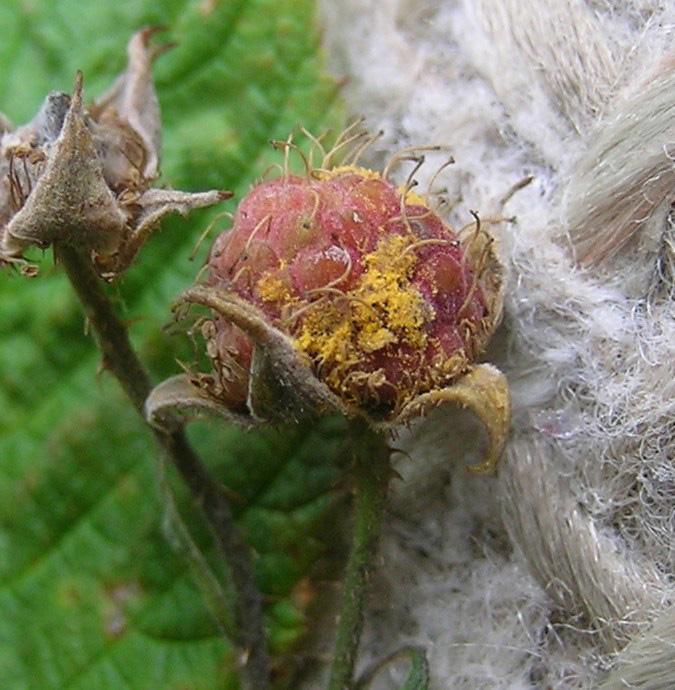Late Leaf Rust of Brambles
Return to Diseases
Late leaf rust (Pucciniastrum americanum) is a fungal disease that can become serious on some cultivars of red raspberry, especially those with wild-type parentage. Premature defoliation and fruit infections reduce yields. Rust symptoms begin in July as chlorotic or yellow spots on upper sides of mature leaves. Yellow-orange, powdery rust spores form on leaves (undersides), canes, petioles, and fruit. By late summer, severe infections result in leaf spots turning brown and eventual leaf drop. Two different fungal life cycles are possible. Most commonly, fungal spores overwinter in infected canes, and spores are released in spring or throughout the growing season when conditions are rainy. An alternate host, white spruce, can play a role in the disease cycle. Spruce (if present) are infected in autumn and spores are released in spring to infect raspberry tissue.

Late leaf rust pustules on undersides of leaves.
(Photo: Unnamed photographer, Ontario Ministry of Agriculture, Food & Rural Affairs)

Late leaf rust on raspberry fruit.
(Photo: Chris Smigell, University of Kentucky)
Management:
- Increase air circulation to encourage drying of plant tissues (pruning, thinning, spacing, and managing weeds).
- Consider planting resistant cultivars.
- Apply fungicides.
